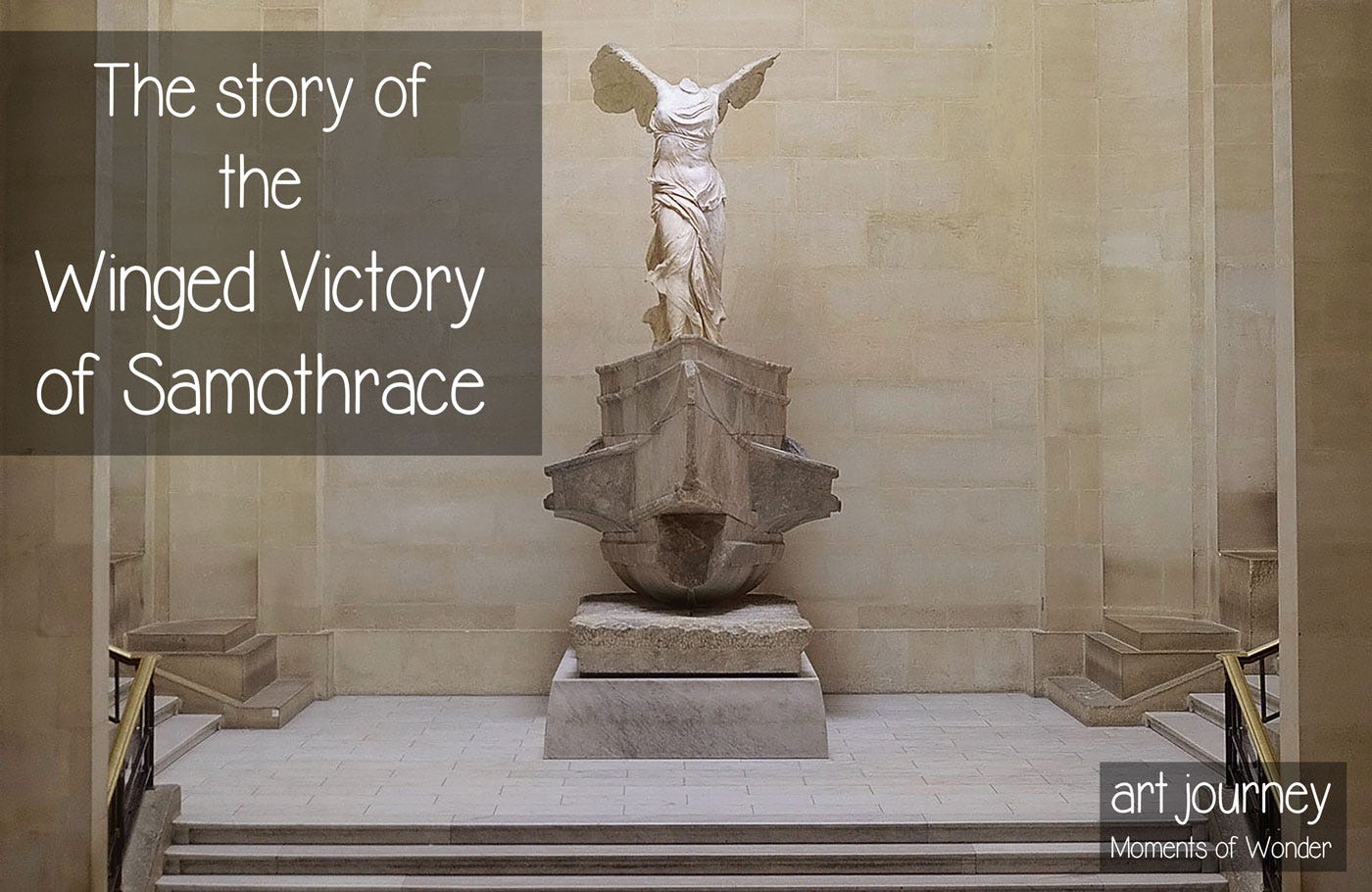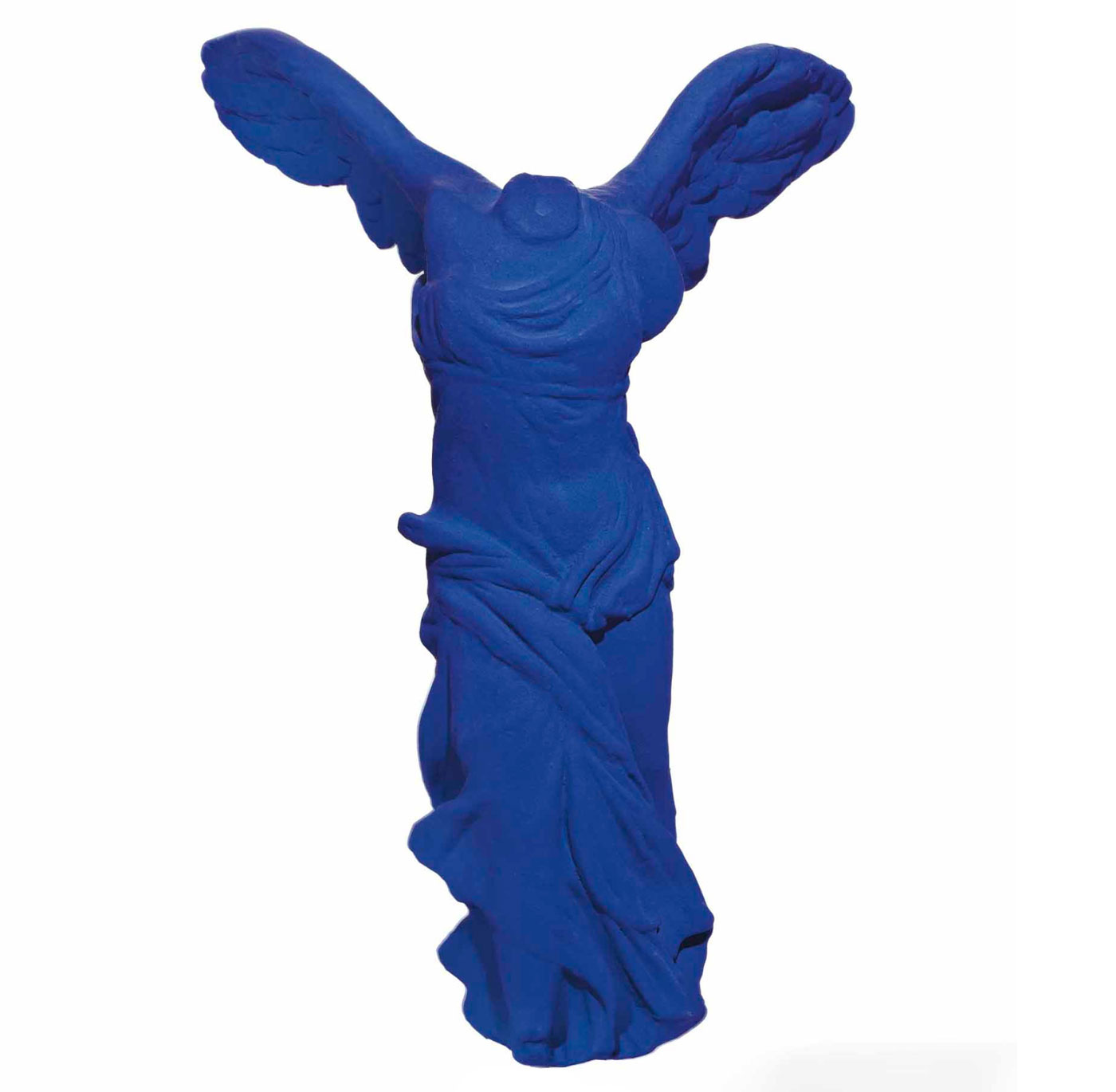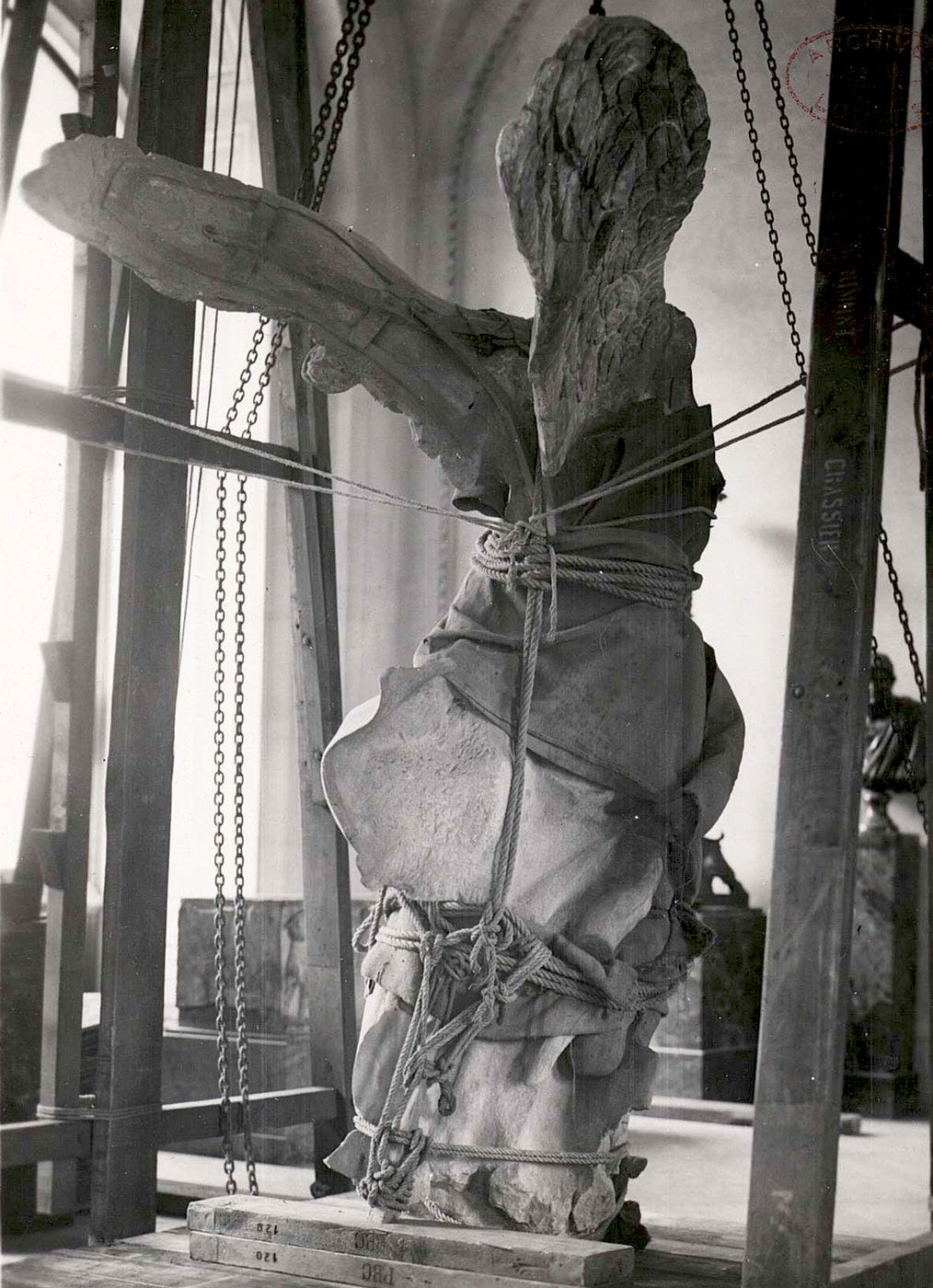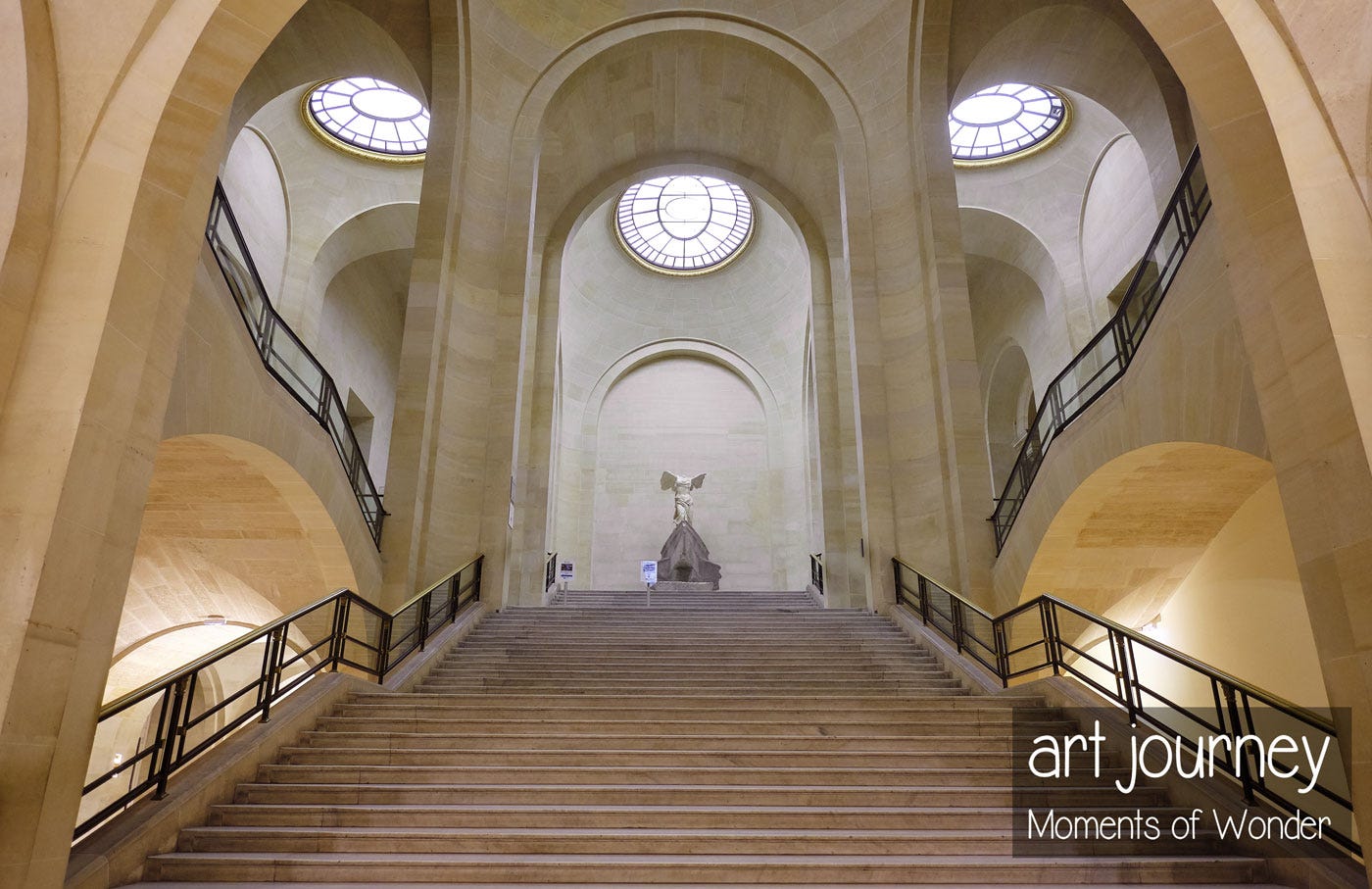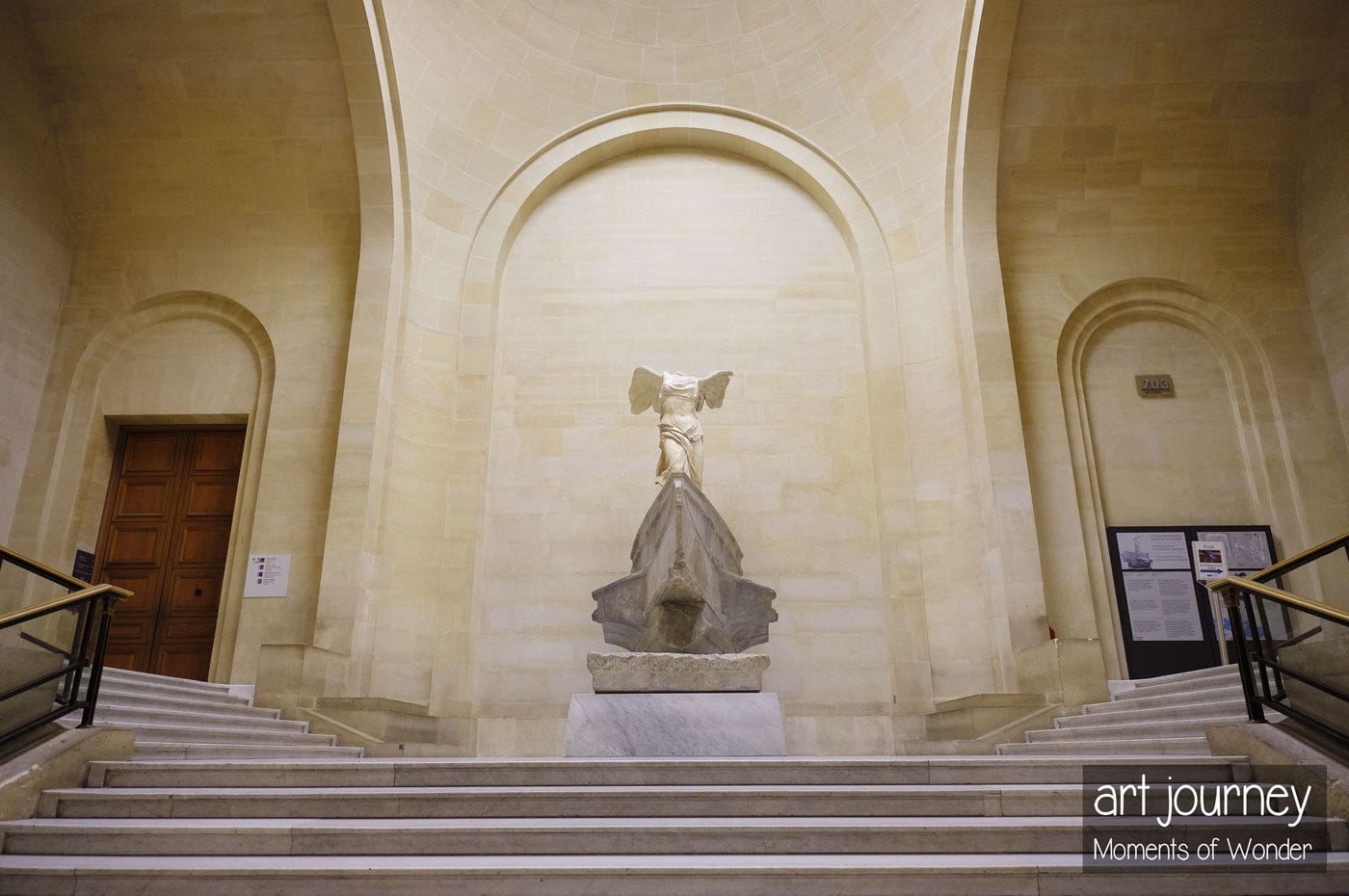The Winged Victory of Samothrace
The story of its discovery and WHY it is one of the world's great sculptures
Dear reader, we've already started listing the top 100 masterpieces in the Louvre. Some of these are hard to find, but this one is impossible to miss. Up to ten million people see it yearly, and they usually stop briefly to peek at the famous Winged Victory.
It is famous, but so what? Why is it unique? What is Nike's story?
The Winged Victory of Samothrace is a genuine Greek marble original
The first and straightforward reason that Winged Victory is one of the Louvre's Top 100 masterpieces is that it is a Greek original. If you read museum labels, you will discover that the majority of Greek statues are actually Roman.
Browse a book about any particular Classical Greek sculptor, and you will notice that the illustrations state 'Roman copy.' There are almost no original masterpieces from the Greek Classical era left.
The most important statues of the gods were made of gold and ivory, or bronze. Since gold and bronze can easily be melted, the gold statues became trinkets, and the bronze statues were melted into cannons.
Once cooked, marble becomes lime. Hence, countless marble masterpieces have been reused as construction material, either chopped into pieces or thrown into a fire pit.
What is a Roman copy, then? Since the Romans conquered Greece and were enamored with Greek culture, they had copies of Greek statues made. It is said there was one marble statue per Roman citizen, so if true, it means one million Roman marble statues were adorning Rome.
Even exaggerated, it means that the reproduction of Greek masterpieces by the thousands gave Greek art a chance to survive in our time. It is exactly as if, one day, the Eiffel Tower is gone, and the Las Vegas copy is the only way to know what the original looked like. Better have 'copies' than nothing at all.
That was context, dear reader, to set the stage for the rarity of the Victory of Samothrace.
How was the Winged Victory of Samothrace discovered?
Samothrace is a remote, rocky island in the Aegean Sea. In 1863, a French diplomat and amateur archaeologist searched for statues among ruins, as he had noticed earlier that many temple remains were on the island.
With only twenty men, he quickly stumbled upon a statue. Translated into English for this story, here is his description of the find:
My eyes fell upon a very beautiful piece of white marble, barely emerging from the ground, about fifty meters southeast of the stoa, which I recognized, after having dug it up myself, to be a woman's breast of the most admirable workmanship.
An immediate search was carried out on this point, and the statue of Victory soon came to light, lying under two feet of earth and rocks. The workers came to me, shouting:
"Sir, we have found a woman!"
And so was the Victory of Samothrace's body discovered. Champoiseau was correct in instantly recognizing that it was a masterpiece and that it was Nike, the goddess of Victory, but he left a lot behind.
He returned to the island of Samothrace, as did Austrian teams, and it took several campaigns to find the fragments we have today. One hand was discovered, yet it is unlikely that the head and arms would be found, so it needed to be restored. The boat is made of several broken fragments that have been put back together.
Although the body is astonishingly well preserved, its upper part is restored. Her left wing is original—pieced back together—and the right is plaster.
Who carved Winged Victory?

The blunt truth is that we do not know much about the Winged Victory. Who is the artist? We do not know.
How old is it? Although it is impossible to be certain, art historians date the style of the statue to around 200 BC. Historians refer to potential naval victories between 200 and 150 BC. In other words, the Nike of Samothrace is about 2,200 years old.
How was the statue displayed? Outside or inside a temple? The rather excellent condition of the drapery would tend toward having been sheltered from the elements, hence likely inside a sanctuary.
Although we do not know much, one thing is sure: it was certainly not white.
A brightly colored marble statue
The recent restoration of Nike proved beyond doubt that there were traces of blue. It is an open secret that ancient Greek statues were a riot of color and gold. The reason why we assume ancient statues were white is that after spending about 1,500 years buried, they lost their color.
Which begs the question, why is it broken?
Surviving time, earthquakes, and wars
Why so many statues lost their heads and are broken is a story for another day. In the case of Winged Victory, we do not know why it is broken. But it can be as simple as the cumulative effect of time, the elements, and earthquakes.
The last time the Victory of Samothrace was threatened was in 1944, when Nazis nearly torched it, along with the Venus de Milo.
What is special about the Winged Victory of Samothrace?
It is not a Roman copy of a lost Greek original, but one of the best-preserved, genuine Greek marbles. The statue's movement makes it feel as if she had just landed from a flight above the sea moments ago. Her dress feels still moist from the sea breeze—maybe there should be signs warning of the slippery marble floor!
To get a sense of the virtuosity of the carving of the folds, it has been said that they feel as if they had been carved with a finger into clay. Look at her stomach and belly button, and ponder if you have seen anything like it.
She may not have a head or arms, but that did not stop Winged Victory from effortlessly flying atop the Pantheon of ancient masterpieces. Not just the Greek world, but all Antiquity, anywhere.
Nike of Samothrace, an initiation toward contemplation
Two millennia ago, Nike was already on top of a hill and looking down at an admiring public. She was part of a major sanctuary to the Great Gods, where visitors sought protection for their sea voyages.
One needed to be initiated into their mysteries to visit the Great Gods. As it was a secret affair, little is known about what went on. But a Greek historian revealed this:
Now the details of the initiatory rite are guarded among the matters not to be divulged and are communicated to the initiates alone; but the fame has travelled wide of how these gods appear to mankind and bring unexpected aid to those initiates of theirs who call upon them in the midst of perils.
The claim is also made that men who have taken part in the mysteries become both more pious and more just and better in every respect than they were before.
The initiation took place at night and had two levels. Those who reached the second level were called epoptai, a word related to "observe, look upon, behold."
The conclusion of the initiation of the mysteries at the sanctuary of Samothrace was to arrive at the epoption, which means a place of contemplation.
It was not my poetic license to call the Victory of Samothrace an initiation toward contemplation. It is what she was conceived to do. Contemplation made onlookers better in every respect than they were before.
One of my proudest moments is bringing a woman to the Winged Victory and witnessing her emotions. The crowd pushed and shoved her, but she did not care. She had attained the second level of initiation—profound observation—and burst into tears.
That was a great Moment of Wonder.
Sources
Charles Champoiseau "La Victoire de Samothrace", Revue Archéologique, 39, 1880. Translated and edited by the author.
https://www.louvre.fr/en/explore/visitor-trails/the-louvre-s-masterpieces/an-uplifting-sight
https://www.louvre.fr/en/explore/the-palace/a-stairway-to-victory
https://penelope.uchicago.edu/Thayer/e/roman/texts/diodorus_siculus/5d*.html
https://www.samothrace.emory.edu/agent-based-modeling/
https://www.samothrace.emory.edu/finds-from-the-stoa-plateau/
http://odysseus.culture.gr/h/3/eh351.jsp?obj_id=2510





